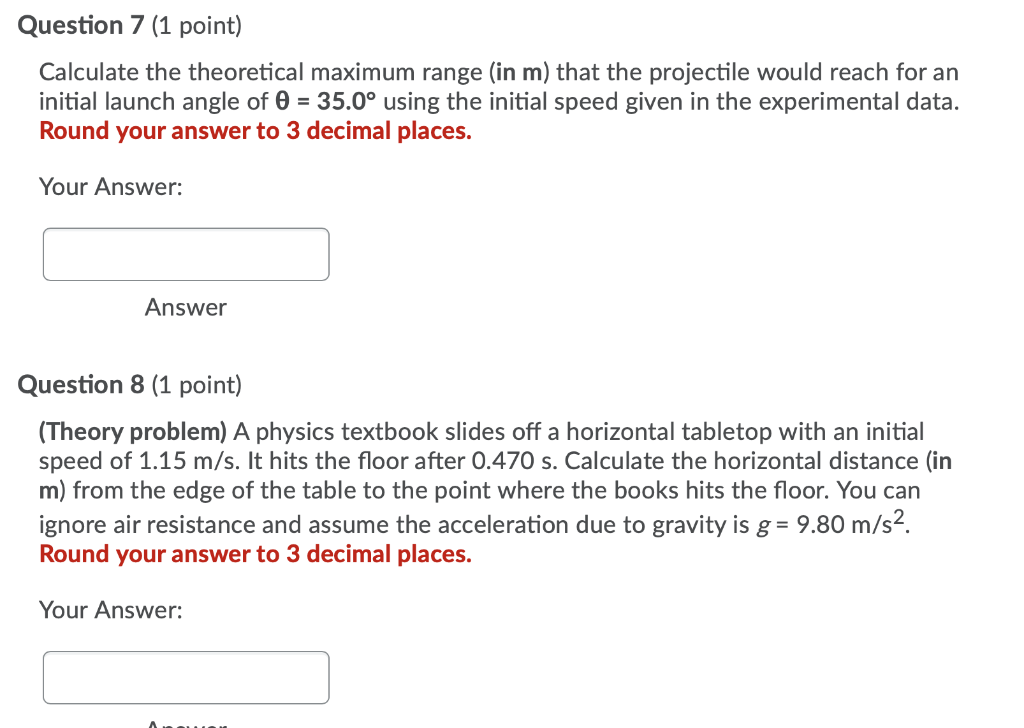

The object is still moving at this moment,īut its velocity is purely horizontal.

How far away does the projectile land from its starting point?Īt the top of the trajectory the y-velocity of the.How much time passes till the projectile strikes the ground?.How much time passes till the projectile is at the top of its flight?.Given the original conditions with which the projectile is thrown we will proceed to find theĬomponents of the original velocity and then move on to answer the following questions: So, for this presentation acceleration in the y-direction, or a y, will be -9.8 m/s 2, and acceleration in the x-direction, or a x, will be 0.0 m/s 2. On Earth the acceleration due to gravity is 9.8 m/s 2 directed downward. There will be no acceleration in the x-direction since the force of gravity does not act along this axis.

Its y-acceleration will be downward, or negative, and will be equal in size to the acceleration due to gravity The projectile will accelerate under the influence of gravity, so Therefore, we will consider x- and y-directedĭisplacements, velocities, and accelerations. It will leave the point of release, arc through the air along a path shaped likeĪ parabola, and then hit ground a certain distance from where it was thrown.Īs mentioned above, this is a two dimensional problem. Without air resistance, the projectile will follow a parabolic trajectory. The usual questions that arise in a first year physics class regarding this motion. The thrown object is called the projectile. Back Projectile Motion Curved Motion Physics Contents Index Homeįor the two dimensional motion of an object thrown in a gravitational field.


 0 kommentar(er)
0 kommentar(er)
